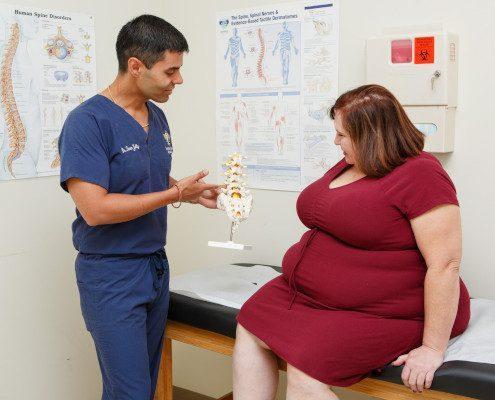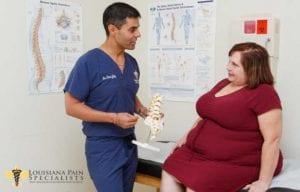
What is Scoliosis?

Scoliosis is a curvature of the spine to one side. The curvature can be in any part of the spine, but it most commonly affects regions in the upper spine and lower spine. It most often will occur during the growth spurt just before puberty. Most cases of scoliosis are mild, but some can be more severe. A very small number of people with scoliosis may need surgery and may have complications from the scoliosis that include chronic pain, breathing difficulty, and reduced movement.
Causes
In general, there is no known cause of scoliosis. Most experts believe that the condition is due to hereditary factors because the disorder tends to run in families. However, the less common types of scoliosis may be caused by the following:
- Neuromuscular Conditions
- Birth Defects Affecting the Bones in the Spine
- Injuries to the Spine
- Infections of the Spine
The risk factors for developing the most common type of scoliosis include age, sex, and family history. The signs and symptoms of the condition typically occur just prior to puberty. Both girls and boys can develop mild scoliosis at about the same rate; however, girls have a much higher risk of the curve worsening to the level of requiring treatment.
Symptoms
The most common symptoms of scoliosis may include the following:
- One hip is higher than the other hip
- Uneven waist
- One shoulder blade appears more prominent than the other
- Uneven Shoulders
If the condition gets worse, the spine may rotate or twist in addition to the sideways curving. This may cause the ribs on one side of the body to stick out further than the ribs on the other side. Most people who develop scoliosis only have a mild form of the disorder, but some may have further complications. These complications can include lung and heart damage, chronic back problems, and appearance changes to the hips, shoulders, and waist.
Treatments
Most children who have mild forms of scoliosis will probably not need any treatment. Treatment will be determined on an individual basis depending on severity of the curve, curve pattern, location of the curve and the bone maturity. Exercises that help to realign the spine, rib cage, shoulders and pelvis are part of the most common treatments. If further treatment is needed, your doctor may recommend a brace. The brace will not cure the scoliosis or reverse it, but it can prevent further curvature. Normally, the brace will continue to be worn until the bones stop growing. For severe scoliosis, surgery may be recommended. The surgery is called spinal fusion. In spinal fusion, the surgeon will connect two or more of the bones in the spine (vertebrae) together. If the scoliosis is more progressive, surgeons can install a rod that can adjust the length as the child grows.
